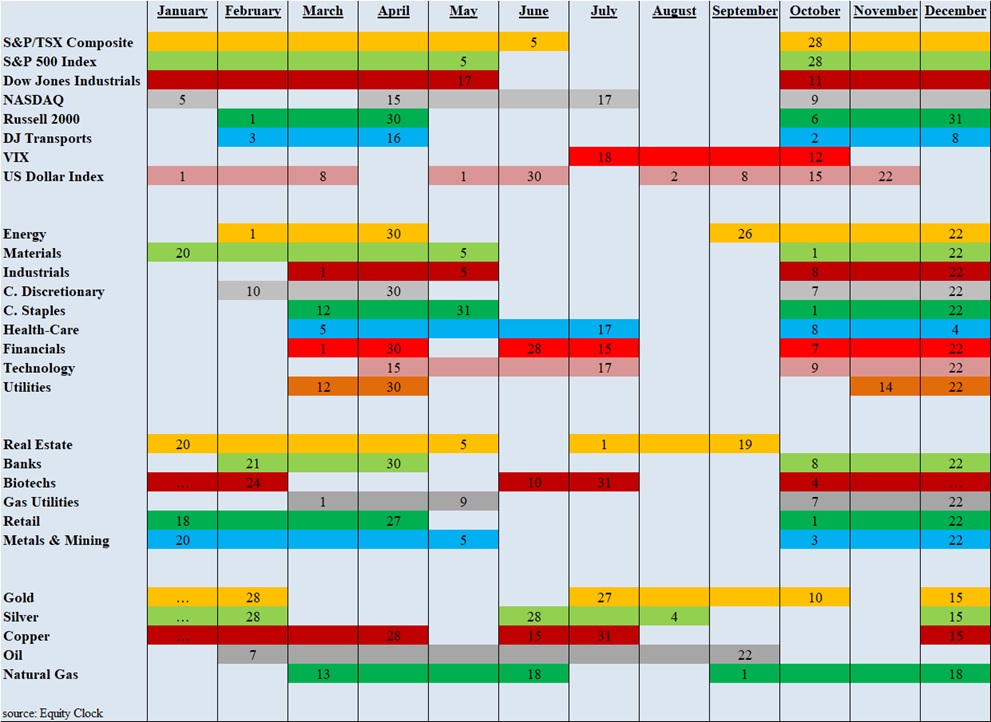Changes For January
January sees 5 additions to the seasonality mix while, over the ensuing four weeks, there is but one index, the NASDAQ, that reaches the end of its seasonality strength.
Importance Of Seasonality Trends
Seasonality refers to particular time-frames when stocks/sectors/indexes are subjected to and influenced by recurring tendencies that produce patterns that are apparent in the investment valuation process. A seasonality study preferably uses at least 10 years of data.
Seasonality Trends Chart
The Seasonality Trends chart below shows the periods of seasonal strength for 28 market segments (sectors/indexes). Each bar indicates a buy and a sell date based upon the optimal holding period for each market sector/index.
Seasonal Positive Strength for the Market Segments in January
The following table shows which indexes and sectors are “in season” during the month of January. The items in RED are this month’s additions.
| INDEX/SECTOR | FROM | UNTIL |
| S&P/TSX Composite | October 28 | June 5 |
| S&P 500 Index | October 28 | May 5 |
| Dow Jones Industrials | October 28 | May 17 |
| NASDAQ | October 28 | January 5 |
| U.S. Dollar | January 1 | March 8 |
| Materials | January 20 | May 5 |
| Real Estate | January 20 | May 5 |
| Bio-Techs | October 28 | February 24 |
| Retail | January 18 | April 27 |
| Metals & Mining | January 20 | May 5 |
| Gold | December 15 | February 28 |
| Silver | December 15 | February 28 |
| Copper | December 15 | February 28 |
//



